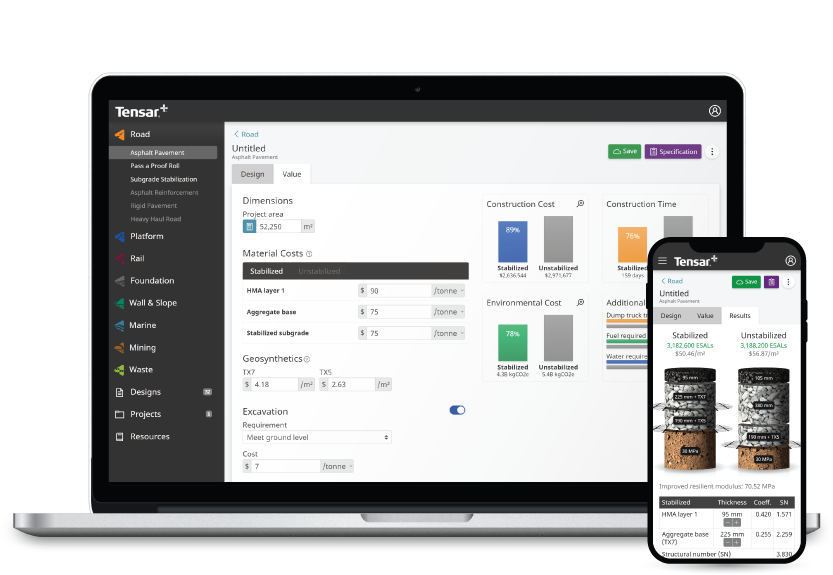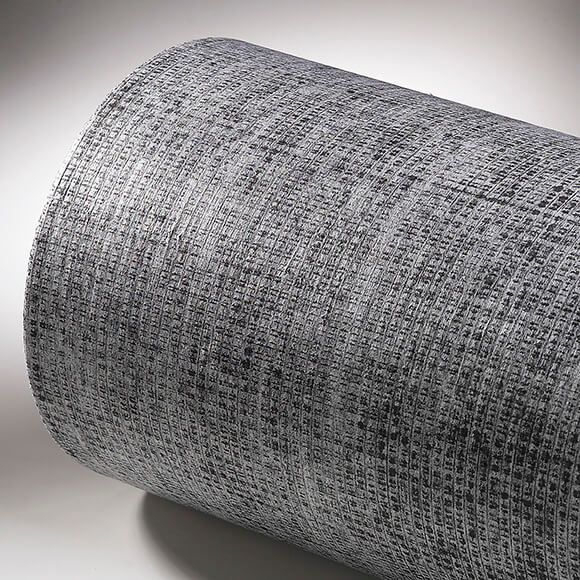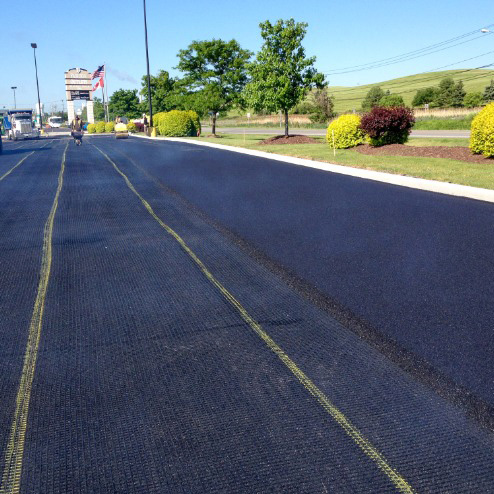
Pavement Layers & Geogrids for Asphalt Reinforcement
Extend pavement life and reduce maintenance costs
When cracking occurs in asphalt roads, parking lots, and other paved surfaces, the traditional solution has been to apply thicker asphalt overlays. Although this provides some additional service life, cracks are only deterred about one year per inch of applied overlay. At this rate, you’ll constantly be repaving, fighting a battle with pavement maintenance that you'll never win.
However, hot mix asphalt (HMA) reinforcement like the GlasGrid® system or GlasPave® paving mats has proven to be an extremely effective method for deterring cracks for an extensive amount of time.
HMA Pavement Reinforcement
HMA pavement reinforcement, or interlayers, serves three main functions: strengthening asphalt, mitigating reflective cracking, and creating a moisture barrier. Interlayers are installed between an asphalt leveling course and the surface course to add a tensile element at the base of the overlay. This becomes the hidden strength in your roads, drastically improving the pavement’s ability to resist cracks and its drainage capabilities.
Strengthen Asphalt
When used to reinforce asphalt, the GlasGrid system helps to create a composite material combining the compressive strength of the asphalt mix with the tensile strength of glass fibers. The open grid structure promotes through-hole bonding and more efficient stress transfer to the grid by both the overlying and underlying aggregate matrices of the asphalt layers. When the GlasGrid TF system is installed, this bond is increased, more uniform, and allows immediate installation of hot mix overlays. This can be achieved only when an open aperture grid structure is used for reinforcement.
Mitigate Reflective Cracking
With a stiff tensile element at the bottom of an overlay, cracks propagating toward the surface are intercepted and prevented from migrating further and tensile strains are reduced to increase the life of the overlay. Cracks are redirected and dissipated horizontally. The reinforced overlay will eventually show signs of fatigue, but at a much-reduced rate, thereby significantly extending the service life of the road.
Create a Moisture Barrier
The matrix structure of GlasPave paving mats allows the asphalt binder to fully penetrate and fill voids within the mat, limiting moisture infiltration into the pavement structure. Preventing water ingress into the lower layers of a pavement structure is critical to preserve the integrity and long-term performance of the pavement section. Even in the harshest environments, GlasPave paving mats will provide significant improvement to the service life of the road.
HMA Product Selection
There are two main types of interlayers: bituminous-based and geosynthetic. Within these two categories, there are many products, all with various pros and cons. With so many to choose from, it's important that you select the interlayer that's right for your project.
Watch our on-demand webinar Extending Pavement Life Using Asphalt Interlayers, where we discuss the different types of interlayers, and the advantages and disadvantages of each. We’ll also share how to select the correct interlayer based on pavement distress, traffic loading, and other factors.
This selection guide helps you choose the appropriate Tensar interlayer system depending upon pavement type, anticipated traffic, waterproofing needs, and existing distress type.

Need design support? We're here to help.
When your reputation is on the line, you need to minimize risk with predictable and proven designs. Let us help you find the right design for your project.






.png)